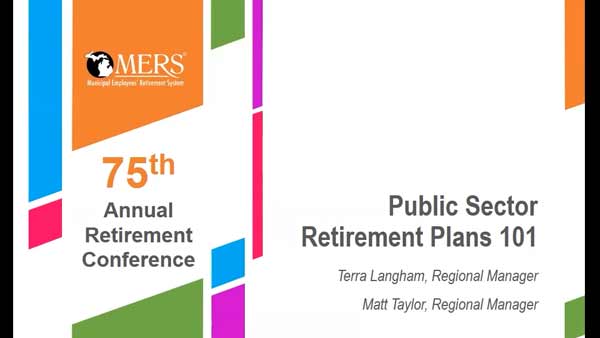In simple terms, retirement plans are supposed to provide employees with income in retirement. But how much do you know about how public sector retirement plans work? Are they different than private sector options? How are the various types of programs funded? How much income will they provide to retirees? This video is specifically designed for those looking to understand the basics of how MERS retirement plans and supplemental savings options work to provide income in retirement.
This short video provides an overview of forfeitures in the MERS Defined Contribution and Hybrid Plans. Employers will learn what they are and the options to utilize funds in accordance with IRS guidelines.
If you offer a Defined Benefit Plan, your Annual Actuarial Valuation (AAV) is an important tool to help you understand the current and future health of your retirement plan. We will walk you through understanding key components of your AAV, and what those numbers tell you about your plan’s current costs and future sustainability.
Recruiting and retaining talent is a concern for many public sector employers, especially if budget constraints make it difficult to offer competitive pay. An attractive benefits package can make the difference, but only if employers understand and can communicate the value of it to employees. This session will look at how MERS employers can build an affordable and comprehensive retirement benefit, as well as how to make it appealing to both current and prospective employees.
Walk through the changes and provide a demo of the streamlined navigation and upgraded system capabilities.
Is managing unfunded accrued liability (UAL) a priority for your municipality? In this session we will review how UAL develops and discuss plan design and funding strategies available to address it. Whether you’re considering modifying benefit provisions for new hires, bridging benefits for existing employees, changing your plan type or making additional voluntary contributions, you’ll walk away with a better understanding of your options and what may work best for your municipality’s situation.
As PA 202 has increased awareness of unfunded accrued liability for retiree health care and other post-employment benefits (OPEB), it has also created greater demand for tools to prefund those obligations. This video will introduce you to two programs MERS offers to help municipalities take a proactive approach to OPEB: the MERS Retiree Health Funding Vehicle and the MERS Health Care Savings Program.
Investment earnings from the MERS Defined Benefit Portfolio fund more than half of the benefits paid to MERS retirees. In this video, we’ll discuss how MERS manages the Defined Benefit Portfolio, including who is responsible for which investment decisions. We’ll share our investment philosophy and how that affects our asset allocation and investment goals. You’ll leave with a better understanding of MERS investments and how those investments impact your plan’s funding.
If you manage your MERS employee benefit plan and its assets, it’s important to know that MERS serves as the plan fiduciary. This session will cover the fiduciary best practices MERS follows, the governing laws and regulations that a fiduciary must adhere to, MERS role as plan administrator and your role as a plan sponsor.
As the cost of health care continues to rise, it’s important to know your options for providing retiree health coverage. Especially for those municipalities with underfunded other post-employment benefit (OPEB) plans. In this video, you’ll learn strategies for addressing OPEB obligations using the MERS Retiree Health Funding Vehicle and Health Care Savings Program. In addition, you’ll hear how using these programs in tandem with a private health care exchange can be a win-win for both municipalities and retirees.










